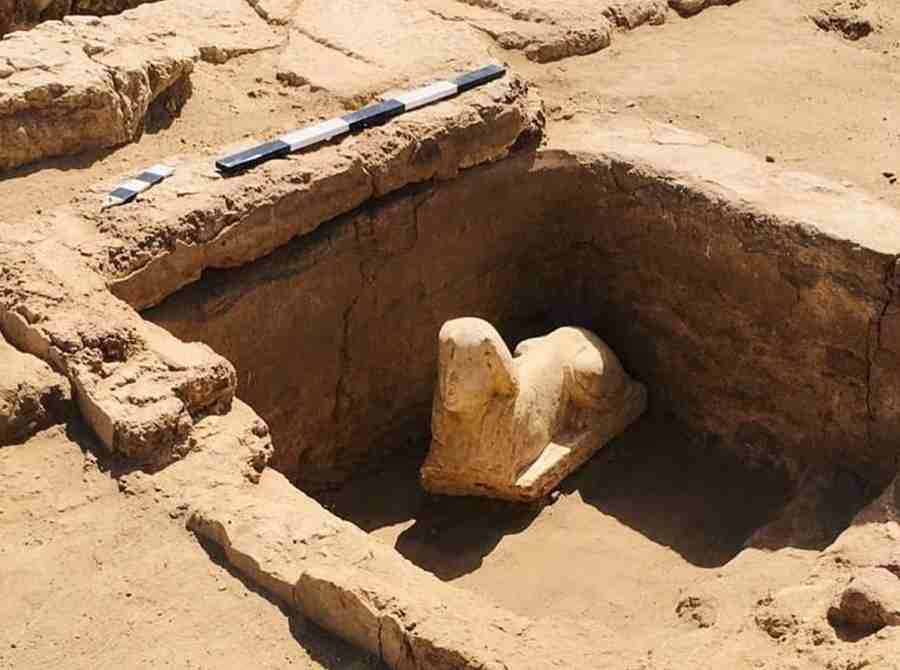![]() The sphinx and the cabin were unearthed near the Temple of Dandra in Qena. Photo: Ministry of Tourism & Antiquities.
The sphinx and the cabin were unearthed near the Temple of Dandra in Qena. Photo: Ministry of Tourism & Antiquities.
Tue 07 March 2023:
An Egyptian archaeological mission unveiled a lime-stone sphinx and a stele that dated back to the Roman era in Qena province, southern Egypt, the country’s Antiquity Ministry said in a statement on Monday.
The sphinx-shaped statue represents one of the Roman emperors wearing a Nemes headdress, which is the striped head-cloth typically worn by pharaohs, and a cobra on the forehead.
:quality(70)/cloudfront-eu-central-1.images.arcpublishing.com/thenational/QA6IMAJHK5HJZM6IWTH53KETPU.jpg)
An archaeologist brushes away loose sand after the head of the sphinx had emerged. Photo: Ministry of Tourism & Antiquities.
A flared cobra is sculpted above the sphinx’s brow, as was the custom when for royal statues.
“Preliminary inspection of the sphinx’s face suggests that the sphinx is a depiction of the Roman emperor Claudius,” the ministry’s statement read.
Claudius ruled Egypt, which at the time was under Roman rule, as part of his empire from 10 BCE-54 CE.
“The statue is really beautiful, its face is characterised by royal features that are depicted quite precisely,” Dr El Damaty said. “The traces of a smile can be seen on the edges of its mouth, which has a dimple on either side. There are traces of yellow and red in the face.”
“According to initial examination of its face, the statue most probably was for Claudius, the fourth Roman emperor, ruling from 41 to 54 AD,” the statement said.
:quality(70)/cloudfront-eu-central-1.images.arcpublishing.com/thenational/FJQGX45POBESHFHOFYSCBOJ67E.jpg)
A tablet inscribed with hieroglyphs and demotic was also found. Photo: Ministry of Tourism & Antiquities.
The statement added that the archaeological team also found a stele below the statute, which was carved with texts in hieroglyphs and demotics, an ancient Egyptian writing system used from roughly 650 BC to the fifth century AD.
The discoveries were made during the excavation work in the eastern Dendera Temple, located about 60 kilometers north of Luxor city, which was built for Hathor, the ancient Egyptian goddess of love, beauty, music, dancing, fertility, and pleasure.
The statute was found inside a two-level compartment that also contained a Byzantine-era sink for preserving water, it added.
The archeologists mission intends to continue its work in Dendera, where there is a small temple dedicated to Isis and believed to have been built by Roman emperor Nero, who preceded Claudius.
Archaeologists suspect that an underground path links the Isis temple to another temple on the eastern side of the complex, dedicated to the ancient Egyptian god Horus.
SOURCE: INDEPENDENT PRESS AND NEWS AGENCIES
___________________________________________________________________________________________________________________________________
FOLLOW INDEPENDENT PRESS:
TWITTER (CLICK HERE)
https://twitter.com/IpIndependent
FACEBOOK (CLICK HERE)
https://web.facebook.com/ipindependent
Think your friends would be interested? Share this story!





